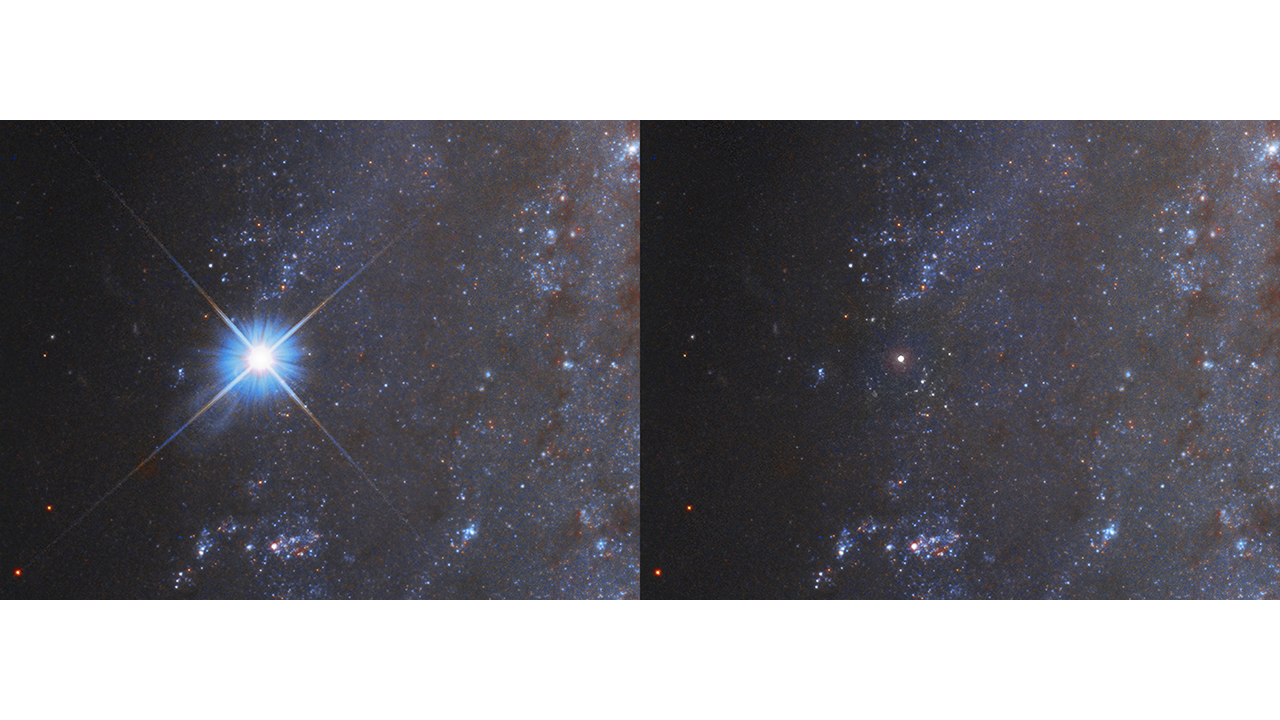NASA's Hubble telescope watches supernova explosion | Space photo of the day for Aug. 22, 2025
This powerful side-by-side comparison shows just how bright a star explosion is.

Recently, the Hubble Space Telescope captured a before-and-after image of a star exploding brightly. With the images one year apart, the contrast shows how bright a supernova is, and how that brightness fades over time.
What is it?
The supernova explosion, designated as SN 2018gv, is found in the spiral galaxy NGC 2525. According to NASA, Hubble began observing the supernova after an amateur astronomer named Koichi Itagaki first detected it in early 2018.
Where is it?
NGC 2525 is approximately 70 million light-years away from Earth.
Why is it amazing?
SN 2018gv is classified as a Type la supernova, a rare type of stellar explosion. Supernovae of this type are also known as "standard candles" because they can reach a consistent peak brightness that astronomers use to calculate distances very precisely. By comparing their known intrinsic luminosity with how bright they appear from Earth, we can determine just how far away these exploding stars are.
Astronomers also use this type of supernova to help study the rate of the universe's expansion, and how it has changed over time. NASA's Roman Space Telescope, which is still under construction, is designed to study explosions like this one to peer even farther back in time than the Hubble Space Telescope to study the universe's expansion rate even more precisely.
Want to learn more?
You can read more about the Hubble Space Telescope and the study of our expanding universe.
Breaking space news, the latest updates on rocket launches, skywatching events and more!
Kenna Hughes-Castleberry is the Content Manager at Space.com. Formerly, she was the Science Communicator at JILA, a physics research institute. Kenna is also a freelance science journalist. Her beats include quantum technology, AI, animal intelligence, corvids, and cephalopods.
You must confirm your public display name before commenting
Please logout and then login again, you will then be prompted to enter your display name.

